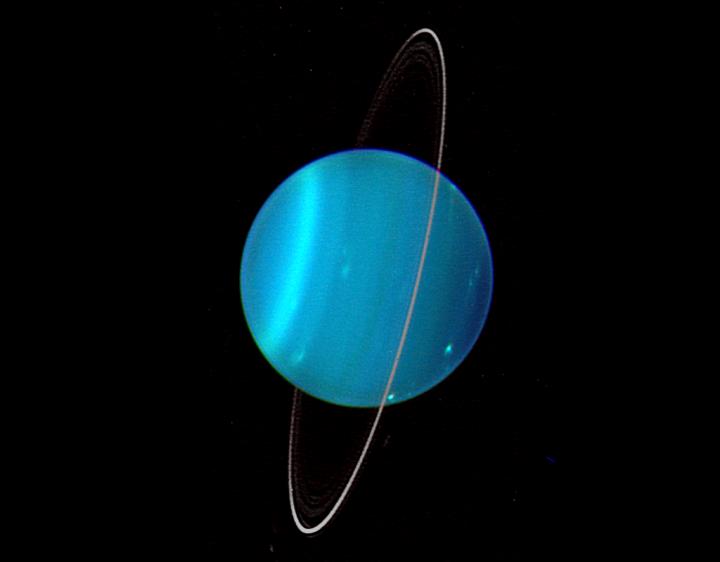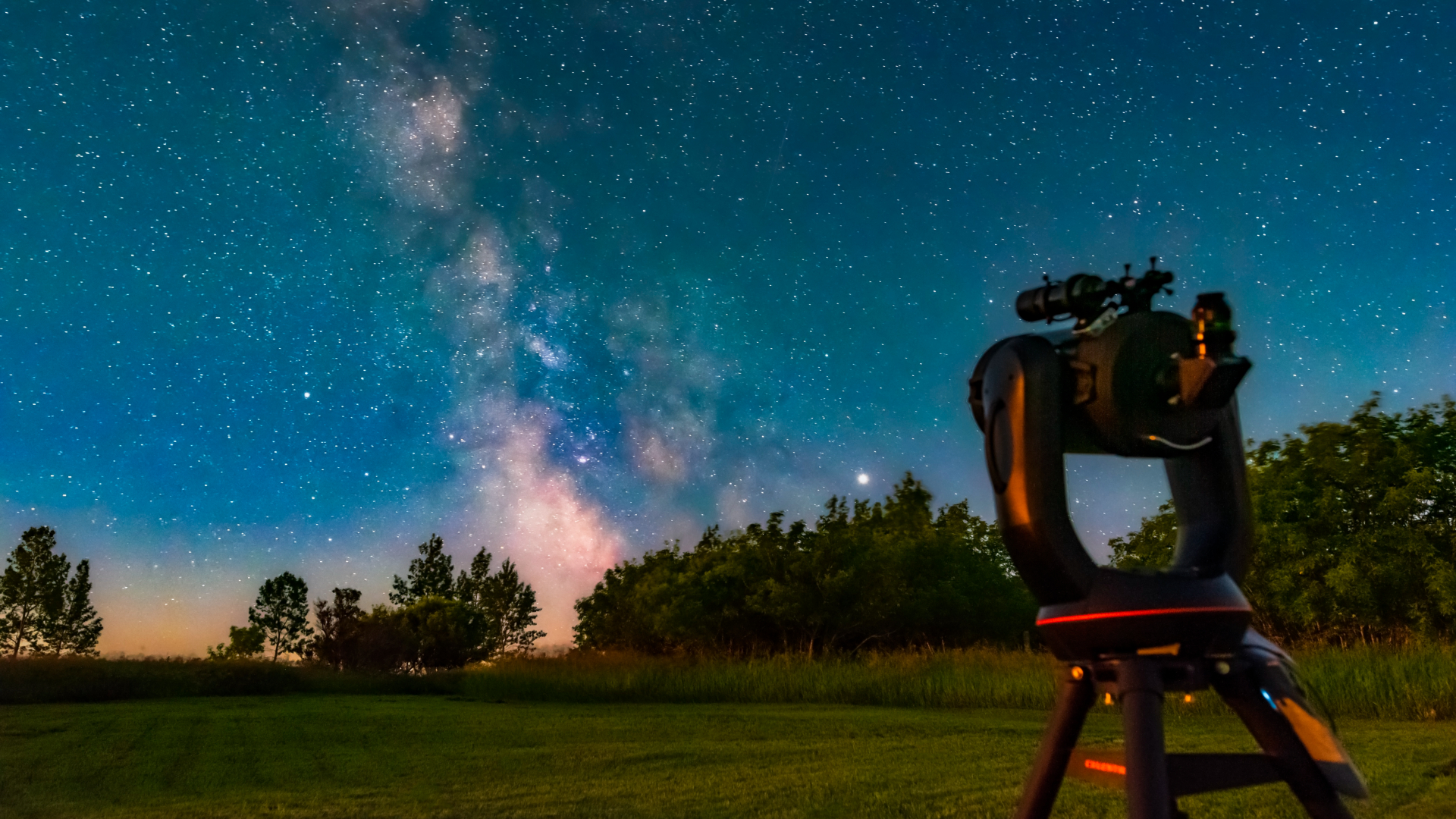What smacked Uranus on its side? Something icy and as massive as Earth, scientists say.

The impactor that knocked Uranus on its side long ago isn't quite so mysterious anymore.
Uranus is tipped over more than 90 degrees relative to the plane of the solar system, and so are the gaseous planet's ring system and the orbits of its 27 known moons. Astronomers think this unique configuration is evidence of a violent collision Uranus suffered shortly after it was born, which also apparently supercharged the planet's rotation. (Uranus spins around its axis once every 17 hours, significantly faster than Earth does.)
Details of that collision have remained elusive, however, because simulations have struggled to generate the Uranus system that we see today. For example, the mass of the post-impact debris disk tends to be quite big in these models — much bigger than it "should" be, given the total mass of Uranus' moons today.
Related: How did Uranus form?
Until now, that is. A team of researchers has had success with a novel modeling strategy devised to investigate the formation of moons around frigid planets, a new study reports.
The frigid part is key. Giant impacts in the cold and dark outer solar system have different consequences than smashups much closer to the sun, such as the long-ago collision that resulted in the formation of Earth's moon, the researchers found.
This latter encounter involved the proto-Earth and a Mars-size body called Theia, both of which were primarily rocky (rather than icy). The material blasted into space by the impact therefore solidified rather quickly, allowing the newborn moon to snare quite a bit of it gravitationally.
Breaking space news, the latest updates on rocket launches, skywatching events and more!
But the material liberated during the Uranus collision was much more volatile — stuff like water and ammonia — and remained gaseous longer. The growing proto-Uranus gobbled most of this gas up, leaving less of it around to form moons, according to the new study, which was published online last week in the journal Nature Astronomy.
The researchers' model, which takes all of this into account, suggests that the body that slammed into Uranus was icy and big, with a mass between one and three times that of the modern Earth.
"This model is the first to explain the configuration of Uranus' moon system, and it may help explain the configurations of other icy planets in our solar system such as Neptune," study lead author Shigeru Ida, of the Earth-Life Science Institute at the Tokyo Institute of Technology in Japan, said in a statement.
"Beyond this, astronomers have now discovered thousands of planets around other stars, so-called exoplanets, and observations suggest that many of the newly discovered planets known as super-Earths in exoplanetary systems may consist largely of water ice," Ida said. "And this model can also be applied to these planets."
- Photos of Uranus, the tilted giant
- Old gas blob from Uranus found in vintage Voyager 2 data
- How the moon formed: 5 wild lunar theories
Mike Wall is the author of "Out There" (Grand Central Publishing, 2018; illustrated by Karl Tate), a book about the search for alien life. Follow him on Twitter @michaeldwall. Follow us on Twitter @Spacedotcom or Facebook.
OFFER: Save 45% on 'All About Space' 'How it Works' and 'All About History'!
<p>For a limited time, you can take out a digital subscription to any of <a href="https://www.space.com/your-favorite-magazines-space-science-deal-discount.html" target="_blank">our best-selling science magazines for just $2.38 per month, or 45% off the standard price for the first three months.
Michael Wall is a Senior Space Writer with Space.com and joined the team in 2010. He primarily covers exoplanets, spaceflight and military space, but has been known to dabble in the space art beat. His book about the search for alien life, "Out There," was published on Nov. 13, 2018. Before becoming a science writer, Michael worked as a herpetologist and wildlife biologist. He has a Ph.D. in evolutionary biology from the University of Sydney, Australia, a bachelor's degree from the University of Arizona, and a graduate certificate in science writing from the University of California, Santa Cruz. To find out what his latest project is, you can follow Michael on Twitter.

